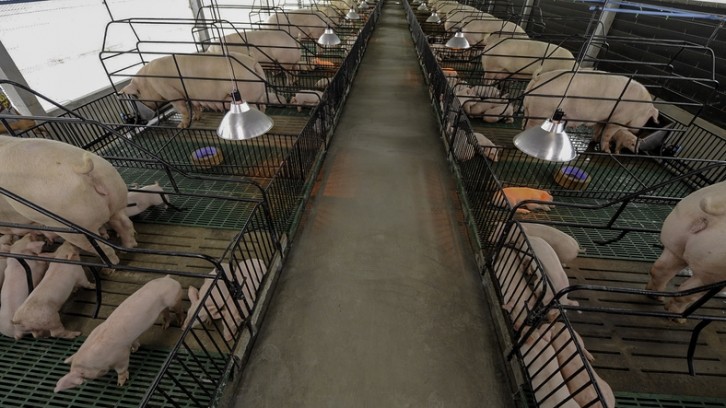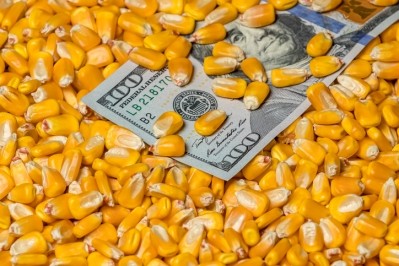Special Edition: Making feed more sustainable
Cargill backing circular based pig farming systems in China, and FCR improvements, emissions reduction in Korea

Linda Midgley, enterprise sustainability lead, Cargill Animal Nutrition and Health, said that agribusiness group is looking to address those challenges by leveraging its knowledge, expertise, and global presence to drive innovative programs on the ground.
The US-headquartered company is looking to accelerate sustainability outcomes with precision nutrition and farming, she continued, by integrating sustainability metrics into its systems and tools, and by driving greenhouse gas (GHG) emission reductions, among other approaches.
“In China, for example, we’ve launched a project on circular based pig farming in conjunction with Wageningen Research University (WUR), alongside partners from China and the Netherlands.”
Changrong, a company whose business interests include swine breeding, technical services, and family farming model promotion, teamed up with Cargill to approach a consortium of five Dutch companies and WUR to support them in the development of sustainable, circular based small and medium-sized pig farms in China.
Changrong’s ambition is to develop family-owned pig farms like those based in the Netherlands, but farms adapted to Chinese conditions, with a particular emphasis on making optimal use of local residual and byproduct streams from food and crops orientated towards human consumption, with the idea of making Chinese swine production less dependent on the import of raw materials such as soybean meal (SBM) and corn.
Imported corn, soybeans and SBM are subject to high price fluctuations compared to locally available raw materials that could also be incorporated into monogastric diets, said Rosalie van Emous, senior technology lead, sustainability, Cargill Animal Nutrition and Health.
“In the last years there has been some promotion in China on the use of byproducts and local residual flows such as tofu residues, cottonseed meal, rapeseed meal, peanut meal and rice byproducts, but, in practice, there are challenges that limit their broad-scale usage,” she told FeedNavigator.
In terms of barriers to further exploitation of such raw materials, van Emous outlined how there remain unanswered questions over the quality of these novel ingredients, in terms of digestibility and anti-nutritional factors.
“The availability and variation of locally available feed ingredients and the impact of these ingredients on palatability, animal performance, and health also need to be considered. Additionally, specific technological processing, such as drying and grinding, may be required to include these ingredients in diets or to increase the nutritional value for pigs, and adequate supply chains may not be set up yet."
The novel raw materials would need to be evaluated for feed and food safety as well. “Changes in the source of ingredients and in the transport, storage, processing, and preparation of animal feeds may result in risks for feed/food safety. Technological developments and complex logistics of raw materials can impact feed safety.”
Bennie van der Fels, senior project manager at Wageningen Livestock Research, said the project is focused as well on alternative ingredients such as insect-proteins and novel production systems like vertical farming, including manure management.
“We are piloting promising circular and sustainable pig production options in the Shanxi Province as a concrete case and support small and medium scale family pig farmers in Shanxi by improving their competitiveness in chain collaboration and market concepts. We will do this by developing a chain collaboration model where circular based feeding strategies will be integrated with management topics such as feed/food safety, breeding, biosecurity, health and welfare, housing/climate, and manure management.”
Another aim of the project, which kicked off in July 2023 and is expected to be completed by December 2026, is to promote international collaboration on sustainable pig farming.
“We plan to disseminate the knowledge and approach gained from the Shanxi pilot to multiple platforms and networks and develop business models for circular based pig farming that are beneficial to both Dutch and Chinese international operating organizations.”
Next to Cargill and Changrong, each of the other project partners – Hendrix Genetics, Fancom, MS Schippers, and AgriSyst - is bringing expertise in their respective fields, explained van der Fels.
Optimizing grower finisher pig production in Korea
In another Asian sustainability focused project, Cargill has been working in Korea with Chung-Nam University on trials aimed at addressing odor reduction in pig barns and improving feed conversion ratio (FCR) in grower finishers, with such studies driven by local policies related to ammonia emissions.
Jason Kim, sustainability lead Korea, Cargill Animal Nutrition and Health, explained that, in 2020, the Korean government pursued a policy aimed at reducing carbon emissions and environmental pollution from pig farming, with new standards established to reduce the protein and mineral inclusion levels in feed. Furthermore, he said, there has been growing disquiet about odor emissions related to pig production in that market.
“Cargill Animal Nutrition Korea has recently established a strategy to align with the Korean government’s policies on livestock farming. Through the strategy, we are committed to minimizing environmental pollution, reducing GHG (greenhouse gas) emissions, and contributing to sustainable farming.”
Moreover, as Korea has extremely high land costs, pig production needs to be highly efficient to remain competitive.
There is a renewed interest in improving FCR in Korean pig farming due to increasingly costly feed inputs. In addition, he noted that there are many farms that are moving from first-generation to second-generation owner-operators, and in the case of these second-generation farmers, there is greater interest in data-based management and FCR improvement.
Reducing odor from pig production is complicated and no one solution exists, said Kim. “That is why we have prepared a comprehensive solution package, consisting of field consultation, odor reduction facility recommendations, and a nutritional solution.”
The field consultation aspect of Cargill’s package includes optimization of the manure purification treatment system by a specialized environment solution team, proposals for odor reduction at facilities based on observations, and nutritional approaches such as top-dressing products.
Numerous odor reduction technologies and nutritional solutions have already been introduced to the Korean market, but few products are properly verified and have proof of functionality, explained Kim.
“We are, therefore, preparing a standard for odor reduction. A new verification system has been established in cooperation with Chung-Nam University.”
That university has the best technology in Korea for real-time monitoring of odors emitted from pig barns and for analysis of manure properties, he said.
Cargill is also set to introduce a top-dressing product including a mixture of ingredients in the Korean market next month; it follows the evaluation of selected prebiotics and phytogenic components in a trial at Chung-Nam University and further research will be conducted to verify other potential solutions, said Kim.
Another trial at that academic institution assessed the effect of a 2% decrease in dietary crude protein on ammonia emissions from manure. The findings of that experiment showed there was a 30% decrease in ammonia emission in pigs fed the reduced protein diet with no detrimental effects on growth performance, added the Cargill lead.















